A Visit with Tuscan Artist Silvia Salvadori in Arezzo, Tuscany
Artsy Traveler contains affiliate links for products and services I personally use and can happily recommend. As an Amazon Associate, I earn from qualifying purchases. Please read the Disclosure for more information. If you make a purchase through these links, at no additional cost to you, Artsy Traveler earns a small commission. Thank you!
Artsy traveling means being on the lookout for interesting encounters with artists, artisans, musicians, writers—the whole pantheon of creative people.
In Arezzo, a delightful town in Tuscany known as the city of gold and high fashion, I met with visual artist Silvia Salvadori.
Silvia works out of her studio, the Bottega d’Arte Toscana, on a tiny side street steps from the Piazza Grande in Arezzo (see the map below).
If you are in Arezzo, stop by to meet her and see her marvelous work.
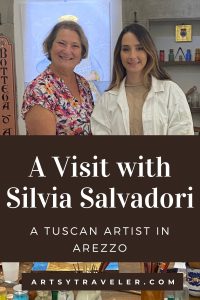
Map of Arezzo
Silvia is one of the very few artists in Italy who creates art using the same painting techniques as those used by the great masters of medieval Tuscany. I’m talking about such luminaries as Giotto, Duccio, and Lorenzetti—all artists I love and who inspired my debut novel The Towers of Tuscany.
Who is Silvia Salvadori?
Silvia’s ambition as an artist is to preserve and promote the ancient painting techniques described by Cennino Cennini in his work Il Libro dell’Arte (1370-1440) and by Giorgio Vasari in the Lives of the most excellent painters, sculptors, and architects (1550-1568).
Using these techniques, Silvia draws her inspiration from the art created by artists in Florence and Siena during medieval, Gothic, and early Renaissance times.
Silvia’s workshop–the Bottega d’Arte Toscana–is a treasure trove of beautiful paintings. One of the more prominent pieces is A Window in Time that hangs on the back wall of the Bottega and immediately captured my attention.
This arresting painting is a tribute to the city of Arezzo and the work of Piero della Francesca. The painting is a good example of how Silvia uses medieval painting techniques to put her own spin on a medieval subject.
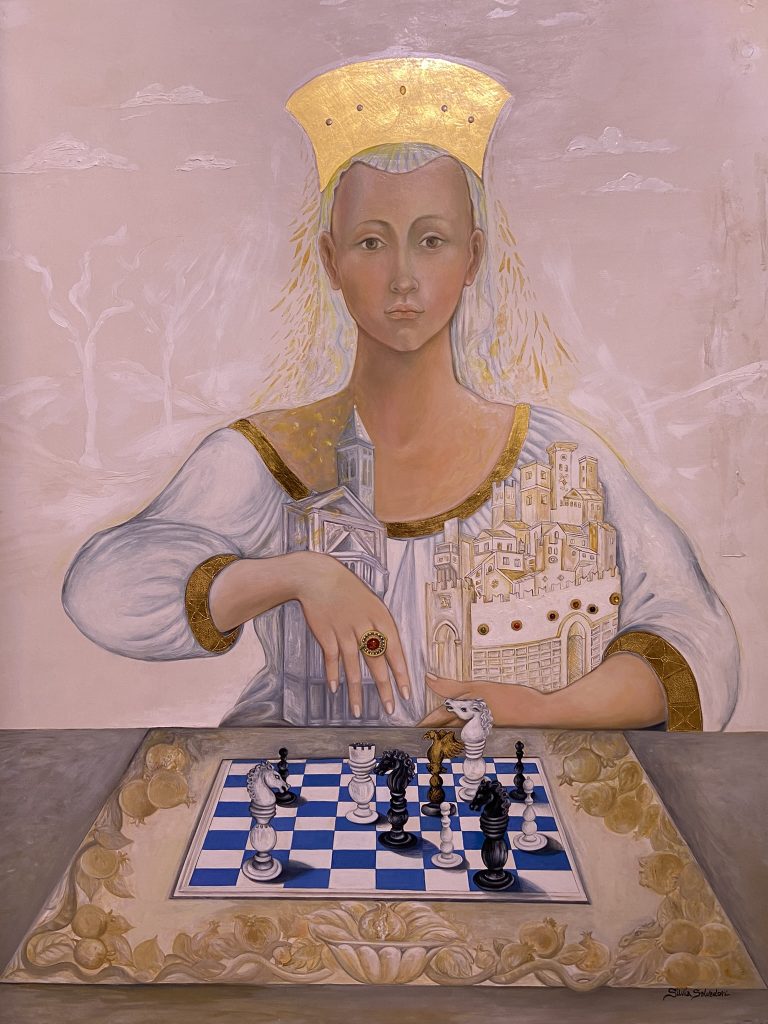
Interview with Silvia Salvadori
I interviewed Silvia in the Bottega d’Arte Toscana in Arezzo in October 2022. Here’s an excerpt from our lively conversation conducted with the aid of a translation app.
Silvia’s Inspiration
Artsy Traveler: Why have you chosen to create works inspired by medieval art and using medieval techniques?
Silvia Salvadori: Twenty years ago, I began to study these painting techniques while at school in Siena. From there, a real adventure began. I decided I wanted to rediscover and use the painting techniques described by Cennini, a painter who lived in the 14th century and was a pupil of Giotto.
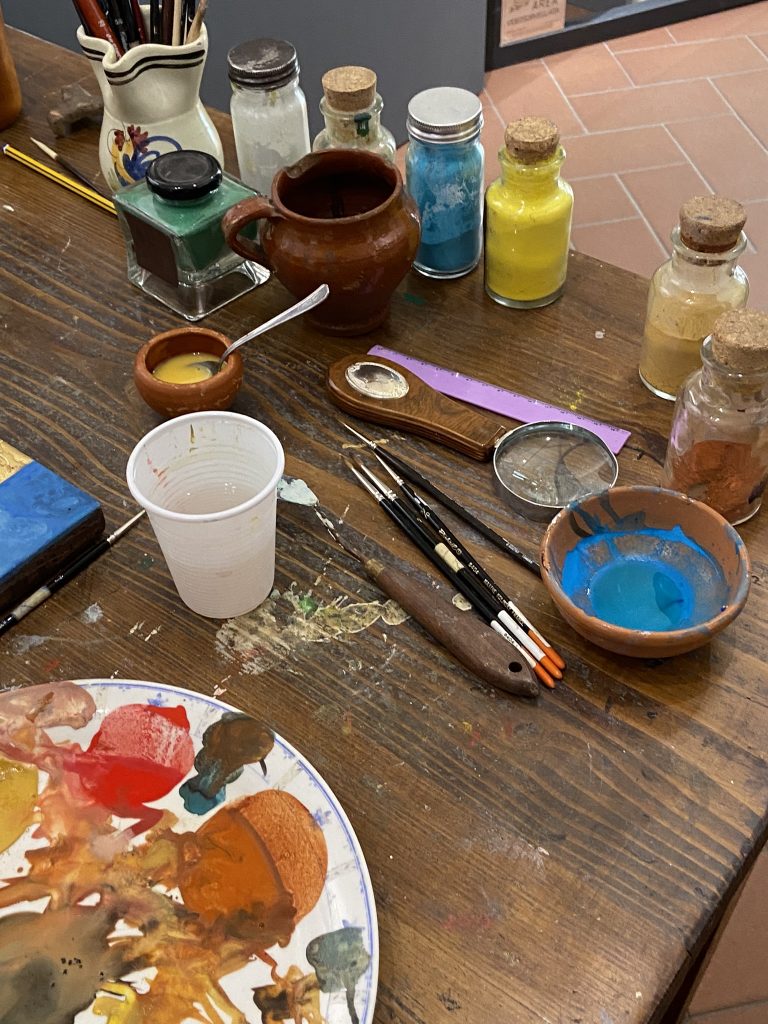
Silvia’s Goal as an Artist
Artsy Traveler: What is your goal?
Silvia Salvadori: My goal is to preserve these techniques from medieval art and pass them on to future generations. These techniques are typically Tuscan. They were born in Siena and then also applied later by artists living in Florence and Arezzo where other schools of painting were born.
There have been other artists who have taken up these techniques but only to make reproductions or copies. I started by making copies, but now I am creating a style that is Renaissance but that also looks to the future.
It is a cultural project. These medieval art techniques are important and should not be lost.
How Silvia Creates a Painting
Artsy Traveler: How do you create a painting?
Enjoying this post? Subscribe to Artsy Traveler to Receive Valuable Travel Tips and Your FREE Guide: 25 Must-Do Artsy Traveler Experiences in Europe for 2025
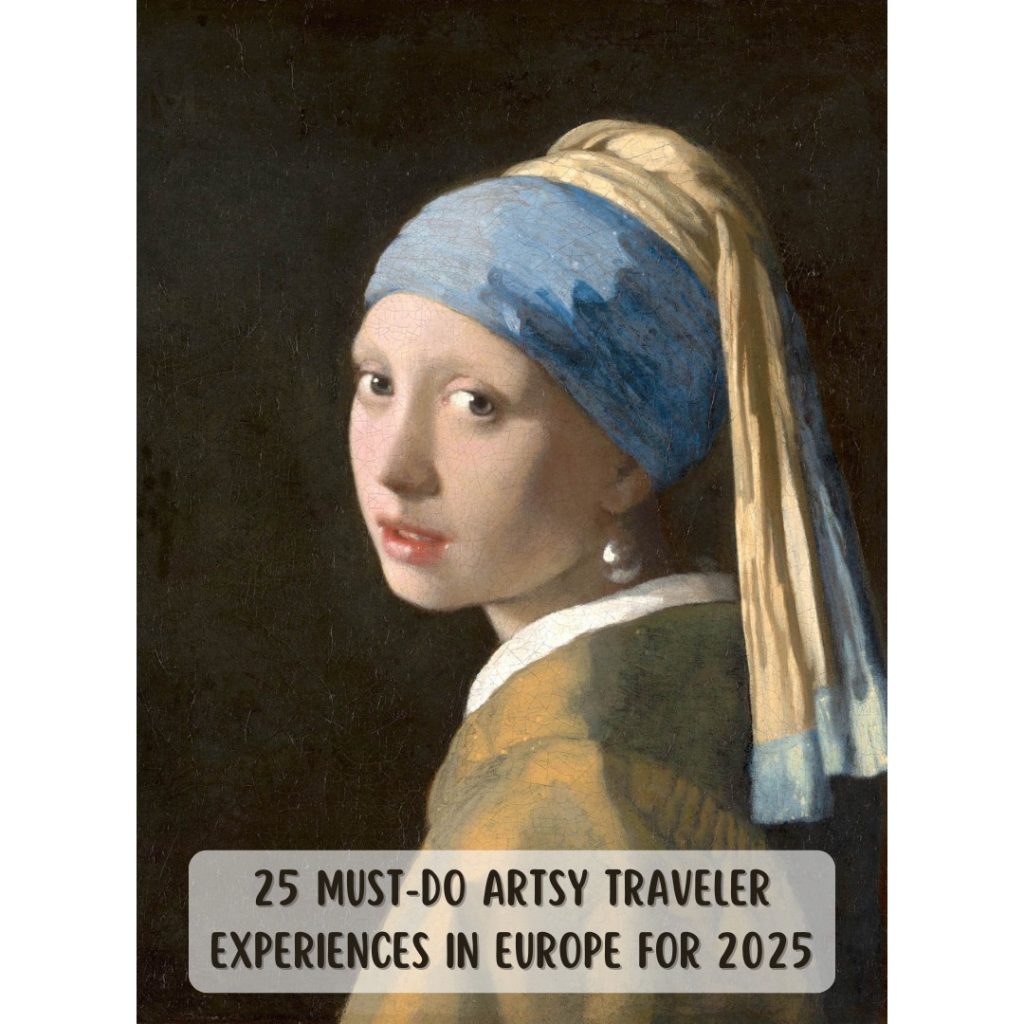
Silvia Salvadori: As described in Cennini’s book Il Libro dell’Arte, I start with wooden boards from poplar, lime, willow or pear trees that have been aged at least thirty years. I then prepare them using layers and layers (eight to twelve coats) of rabbit skin glue mixed with chalk. The chalk I use is the same kind that Cennini used in the 14th century. I also use the same pigments that Cennini describes.
The second phase is gilding performed with thin leaves of pure 23 carat gold stretched on a thin layer of red clay. I also use precious gems. These gems all had special meaning in medieval times. For example, amber, which I use a lot, symbolizes eternity.
For a detailed description of all the steps involved in creating a painting, check this page on Silvia’s website.
Silvia demonstrates how she uses a small punch to make designs in the gold leaf.
Landscapes in Silvia’s Work
Artsy Traveler: I see that you also often include landscapes in your paintings.
Silvia Salvadori: Yes, since I live in Arezzo and every day see the Tuscany landscape, I like to include it in my paintings.
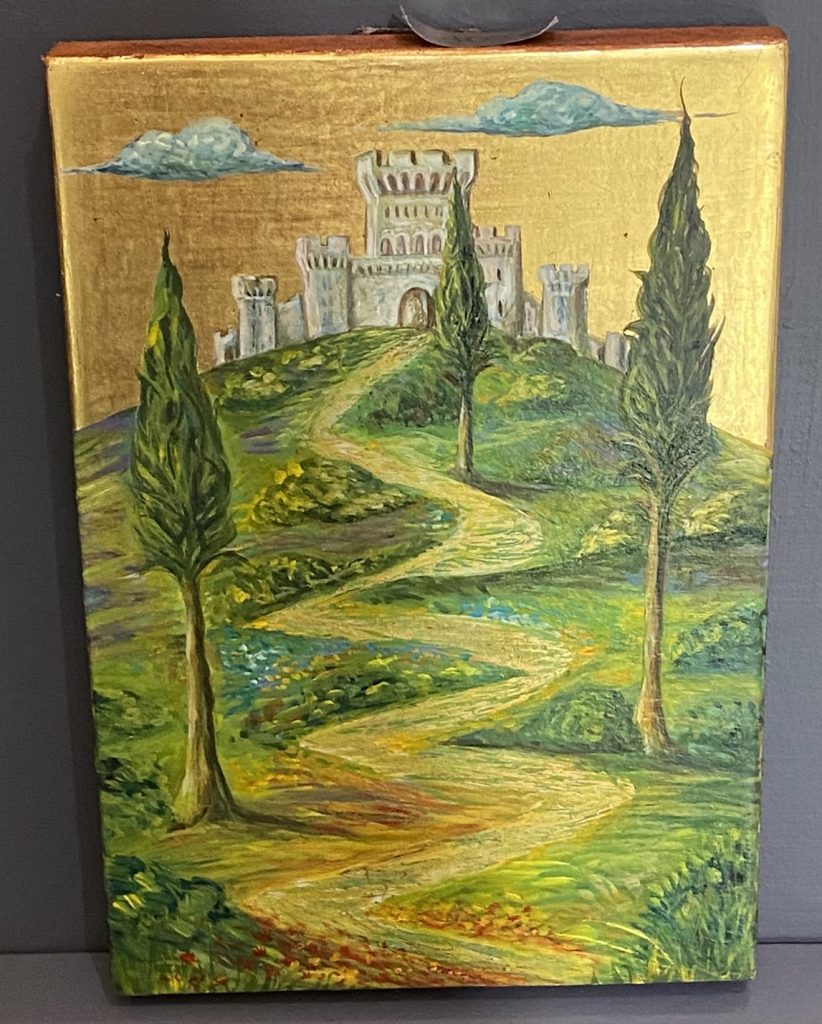
Looking to the Future
Artsy Traveler: Will you one day teach your techniques?
Silvia: I would very much like to teach young people how to paint using these techniques so that the techniques are not lost. But as Cennino said, technique is not enough. To create art, you must have a kind soul.
Silvia’s Artwork
As soon as you see one of Silvia’s pieces, you know you are looking at work inspired by medieval and Renaissance art. And while most of her subjects are directly related to their medieval and Renaissance counterparts, some subjects are contemporary and from pop culture.
Silvia’s work glows with the rich colors she creates from pigments she mixes with egg tempera, just like Cennini describes in his handbook. Her skill is awe-inspiring. Following are examples of the many gorgeous paintings hanging in Bottega d’Arte.
Paintings of Madonna and Child
Go to any art gallery in Italy that features medieval art and you’ll see scores of depictions of the Madonna and Child. Silvia’s versions, while heavily inspired by medieval works, are fresh and vibrant. The colors glow in the soft light of her workshop.
Here are four of the Madonna and Child paintings displayed in the Bottega d’Arte.
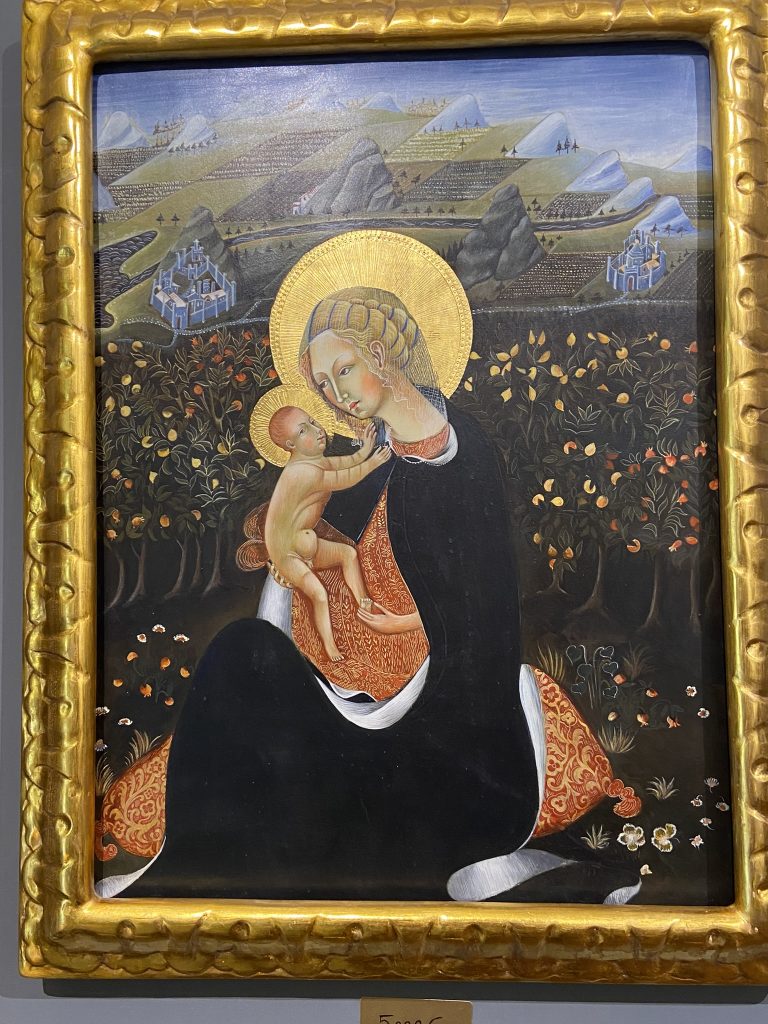
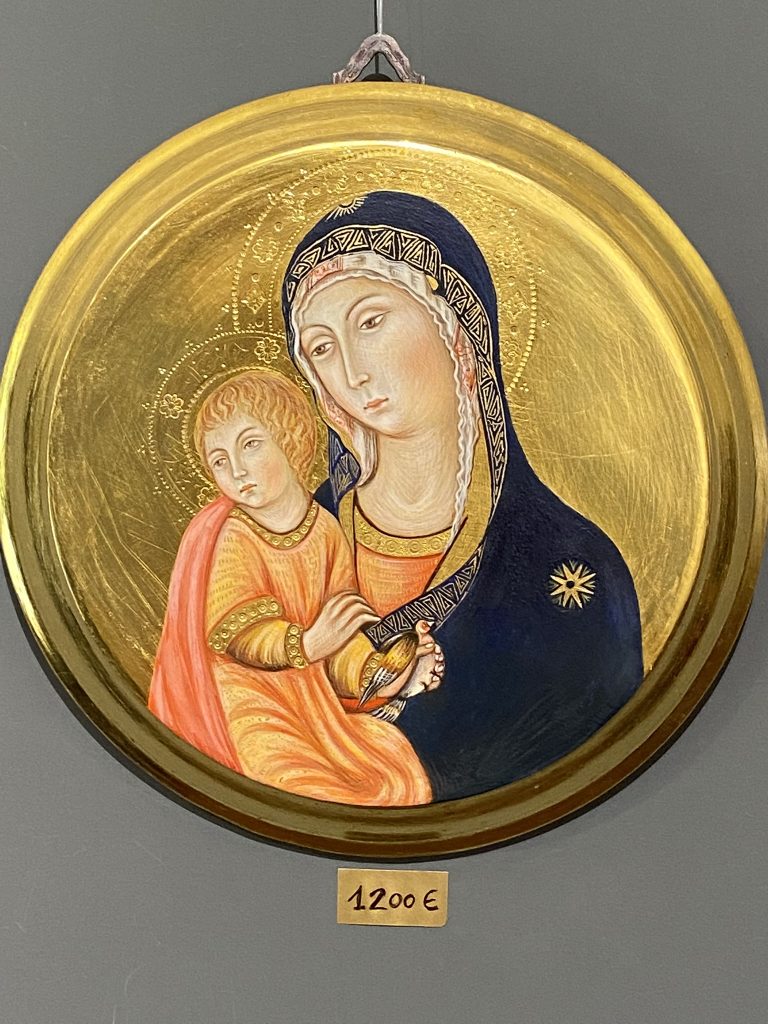
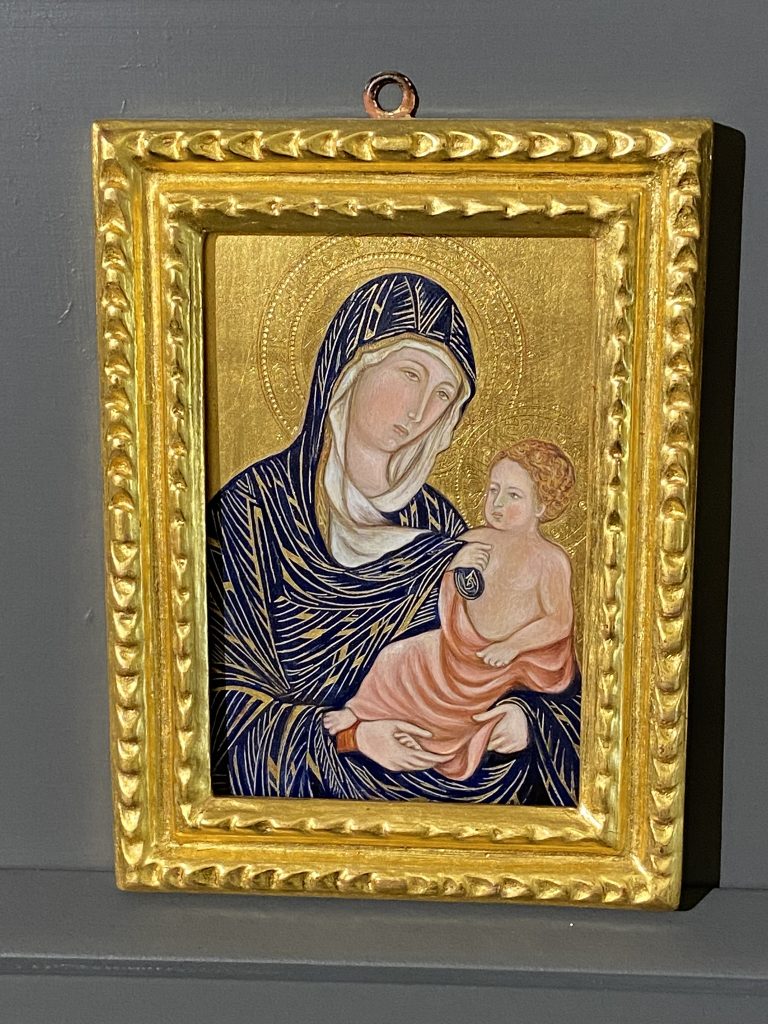
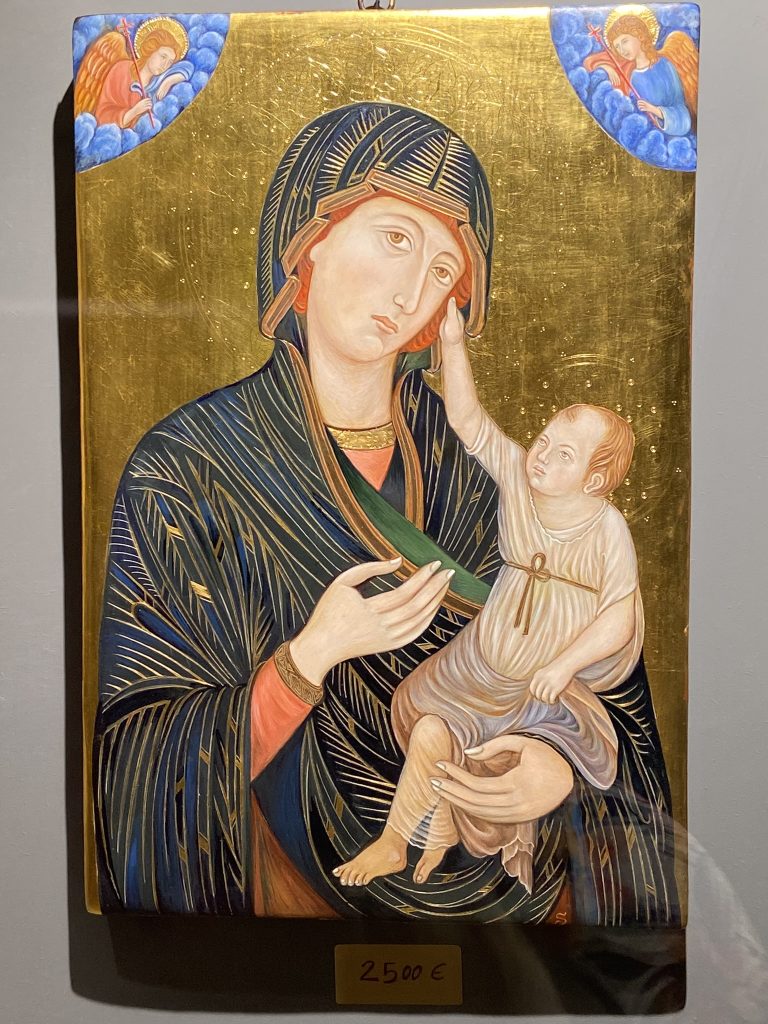
Paintings of Medieval Scenes
I love how medieval artists depicted buildings and towns. Silvia does the same when she includes buildings in her paintings. I particularly loved these two pieces.
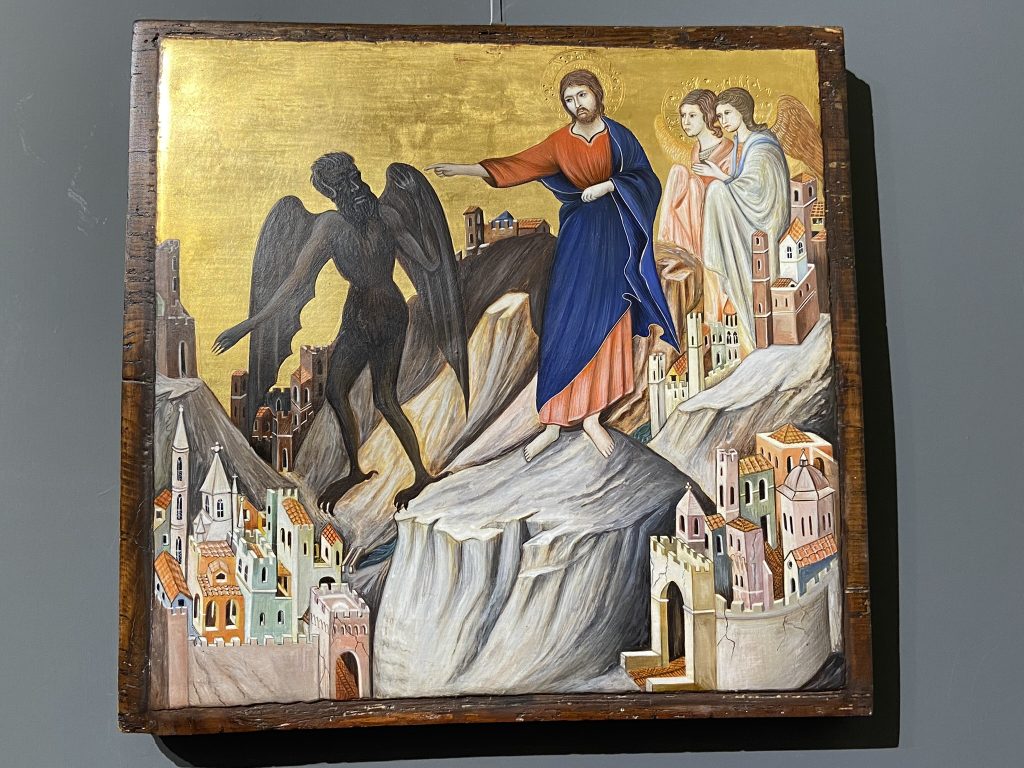
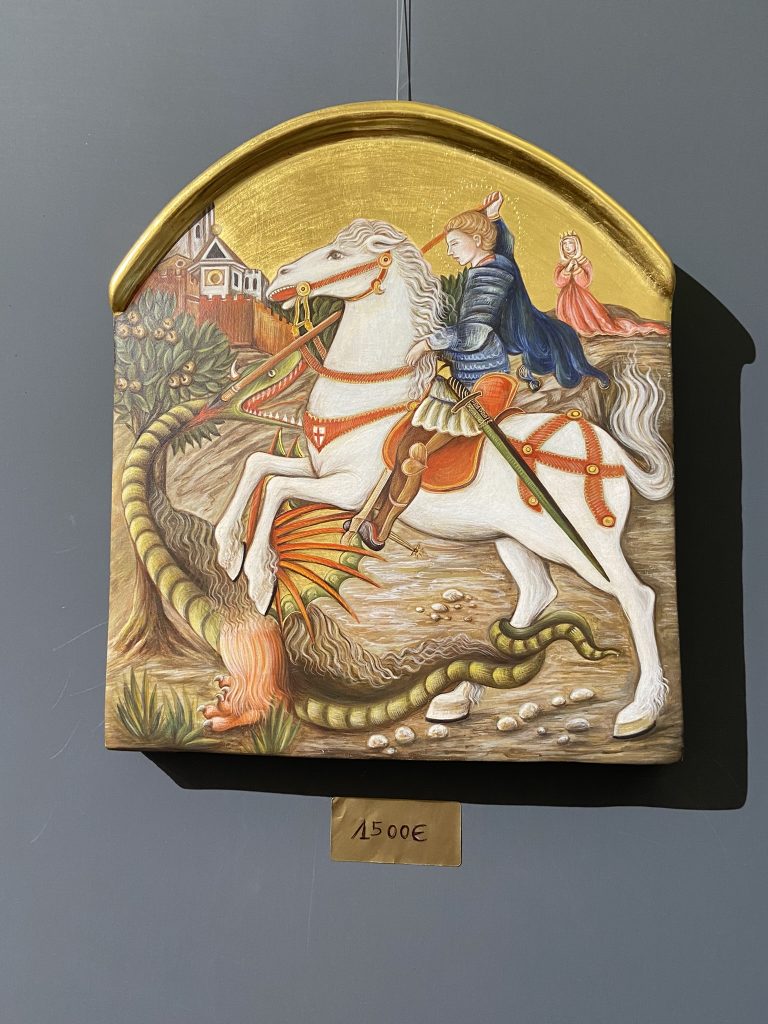
Paintings with Contemporary Subjects
Silvia doesn’t confine herself to creating works in the medieval style. Many of the paintings in her workshop depict contemporary subjects—from Marilyn Monroe to a dachshund (one of my favorites).
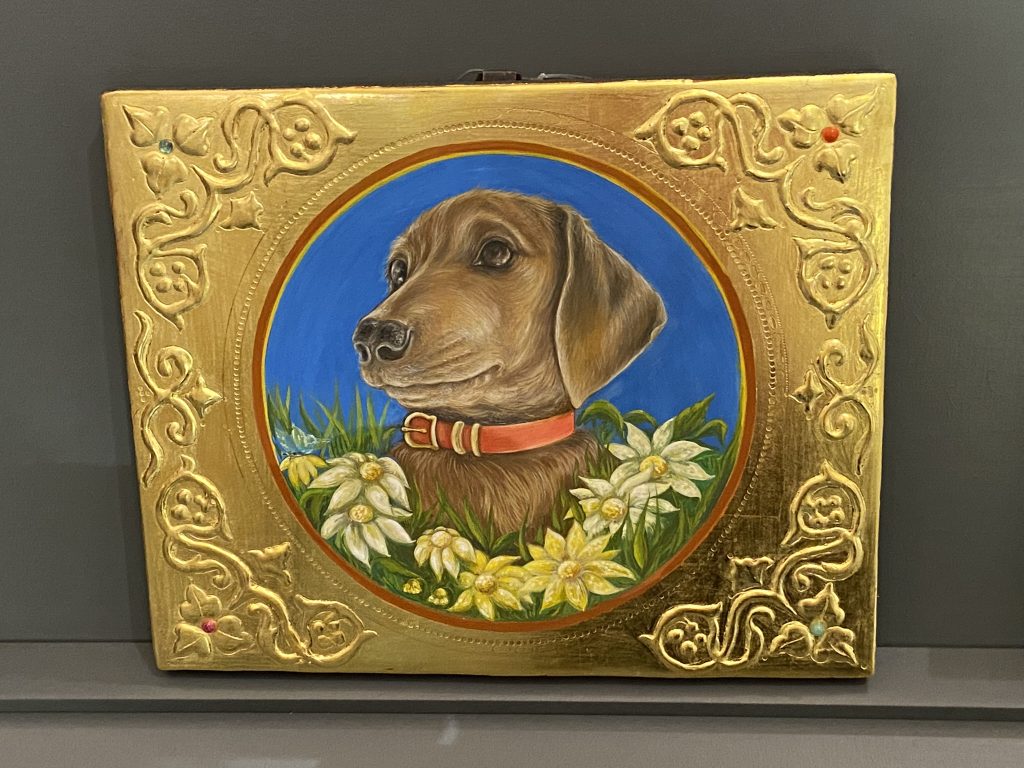
My Connection to Silvia’s Work
I was thrilled to discover Silvia and her beautiful artwork for two reasons. First, as you’ve already seen from the examples included in this post, her work is stunning. And second, her work has a direct connection with my first novel The Towers of Tuscany about a female painter in 14th-century Tuscany.
When I was researching early Renaissance painting techniques in order to write the novel, I read and re-read Il Libro dell’Arte by Cennino de Cennini many times. Imagine my delight to discover that Silvia is intimately familiar with Cennini’s book, credited as the first manual designed to teach painting techniques to artists.
I felt honored to spend time with someone totally dedicated to her art. Silvia clearly loves what she does. As I watched her paint with tiny brushes that she uses to meticulously layer on stroke after stroke, I felt like the centuries had melted away and I was watching Sofia Barducci, my fictional heroine in The Towers of Tuscany, at work.
I have every confidence that Silvia will be able to realize her ambition to one day share her knowledge with other artists so that the ancient techniques are kept alive.
Visit Silvia Salvadori
Visit Silvia in the Bottega d’Arte Toscana in Arezzo and tell her the Artsy Traveler sent you! And after you’ve enjoyed meeting Silvia, consider purchasing one of her pieces. She has a wide variety of sizes and subjects to choose from. And considering the hours and hours of work Silvia dedicates to each of her pieces, the prices are very reasonable.
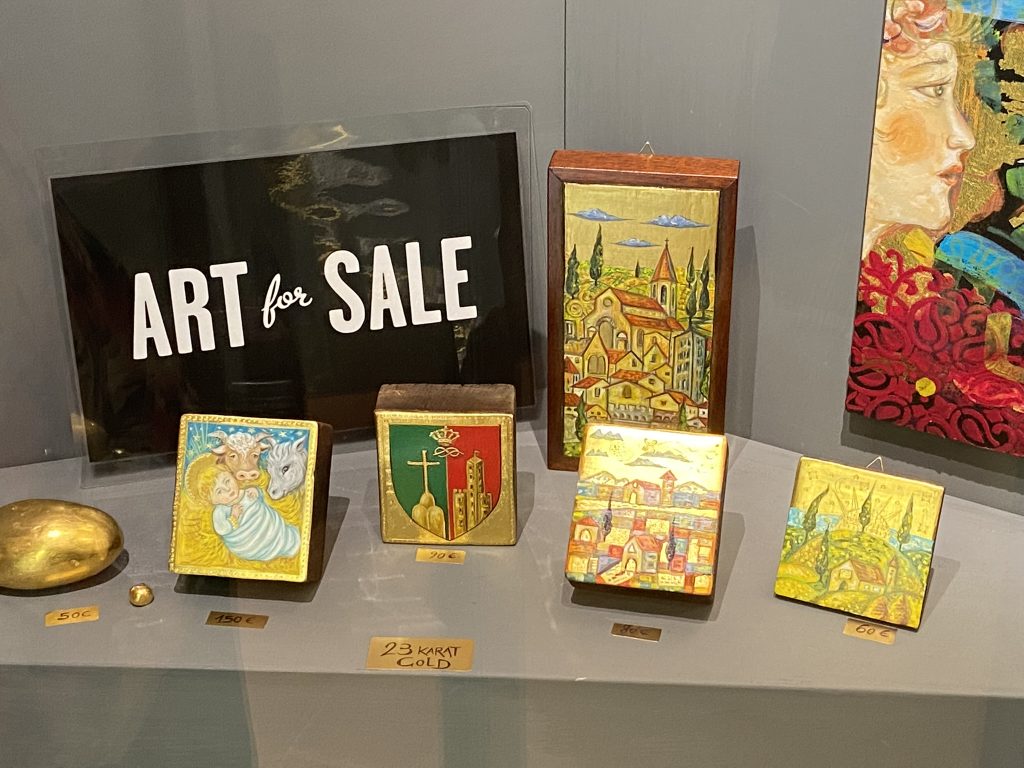
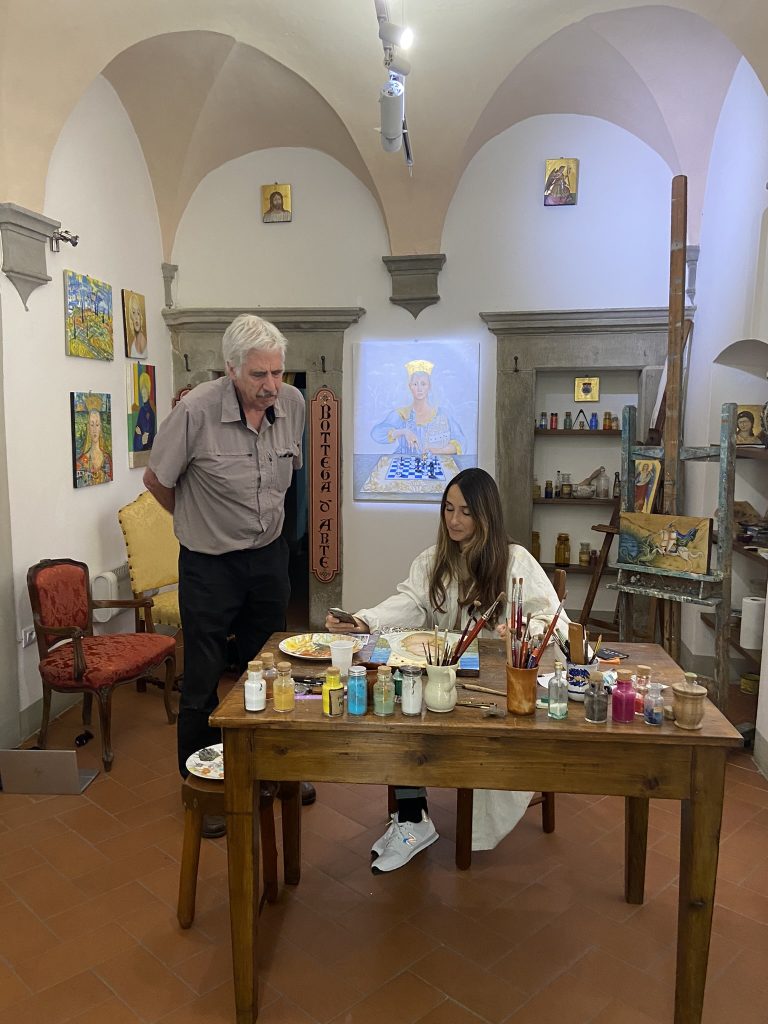
I love the small piece I purchased of a stylized Tuscan town painted in Silvia’s unique style. I have hung it next to my writing desk so I can look at it every day and remember the wonderful hour I spent getting to know Silvia and admiring her work.
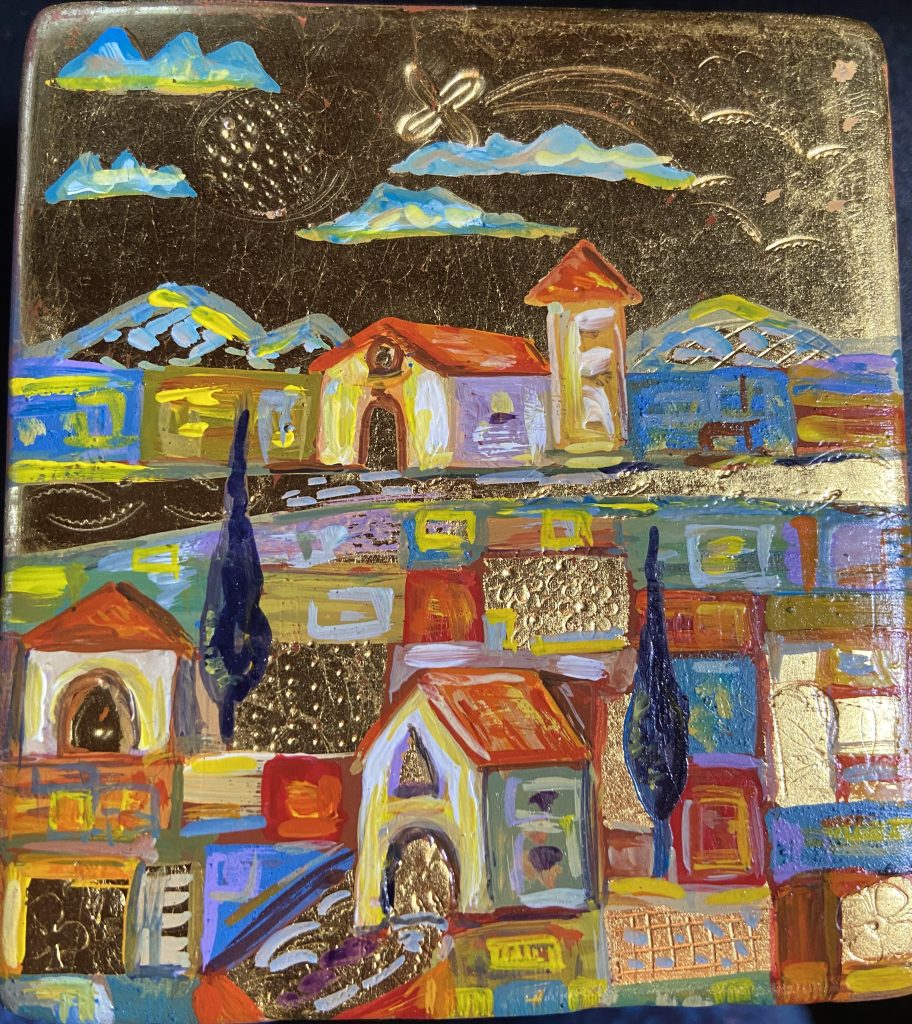
Visit Arezzo
After meeting Silvia in the Bottega d’Arte, take time to wander around Arezzo. It’s a charming town with plenty to delight the Artsy Traveler. With its inclined trapezoidal shape, the Piazza Grande is one of the most beautiful in Tuscany (which is saying something!).
Here are some pictures of the Piazza Grande.
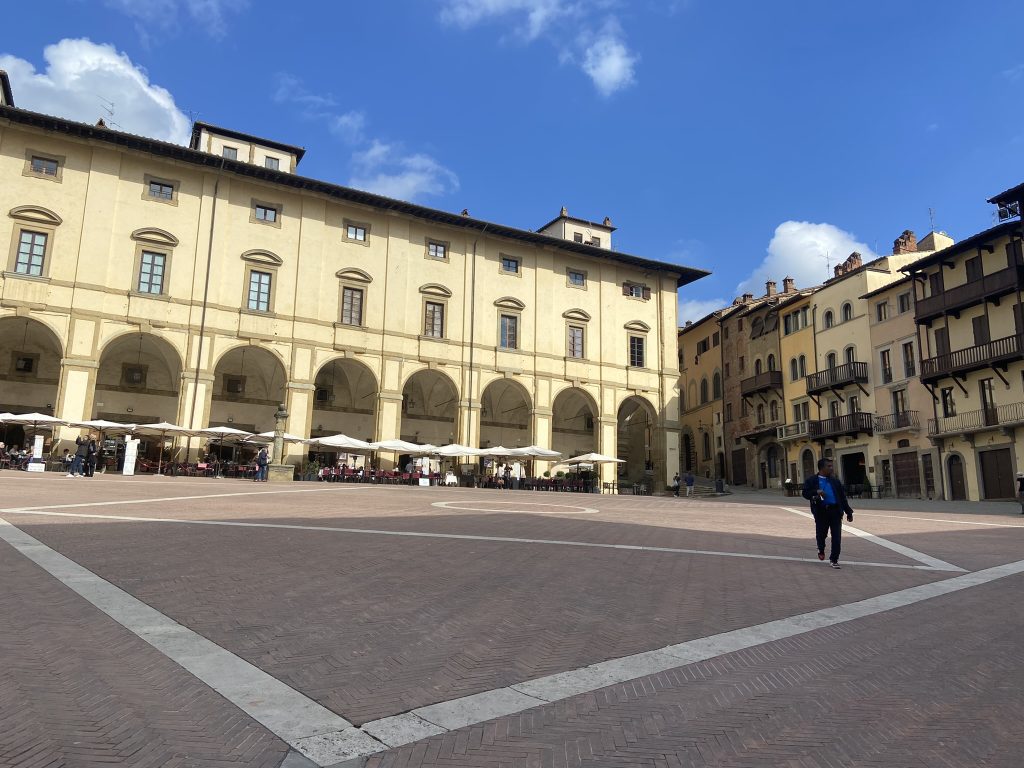
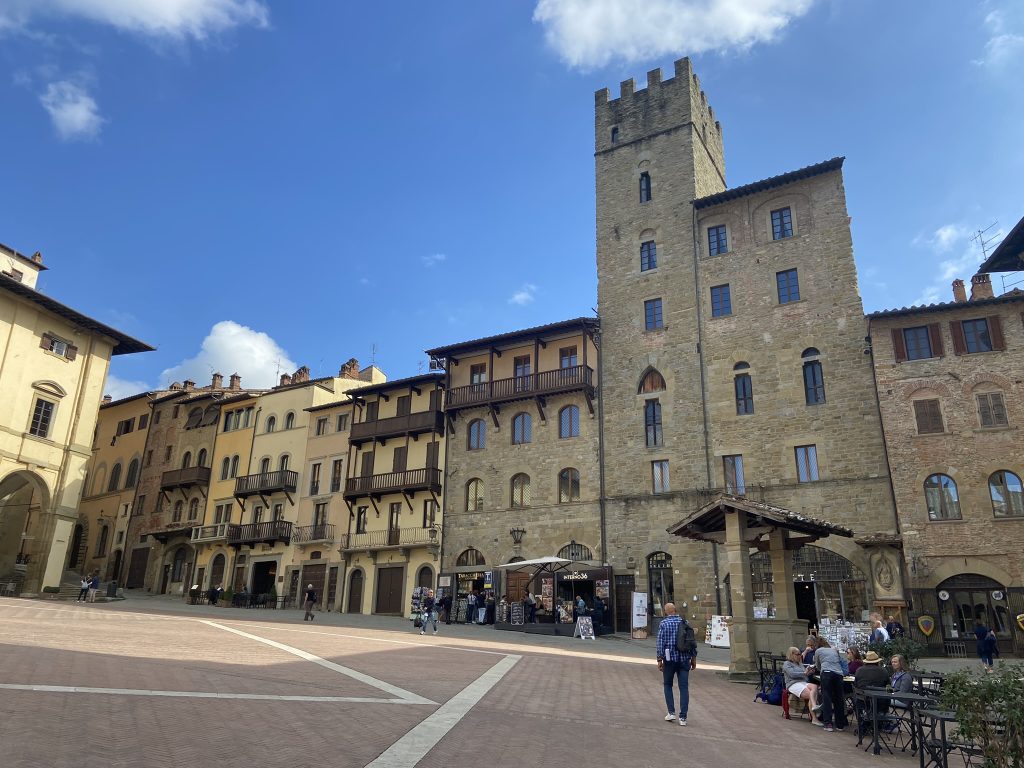
And like so many towns in Tuscany, a big attraction is the food. We passed numerous stores and cafes featuring local cuisine. The specialty in Arezzo is Pappardelle all’Aretina (a ribbon-shaped pasta served with a sauce made from rabbit or duck), Zuppa di Cavolo (a cabbage soup), and the Pappa al Pomodoro (a tomato soup).
While in Arezzo, you can also visit the Vasari House Museum, which is a rare example of an artist’s house from the late Renaissance.
Conclusion
Have you visited Arezzo? Share your experience and suggestions with other Artsy Travelers in the Comments below.
Here are some more posts about artists in Europe:
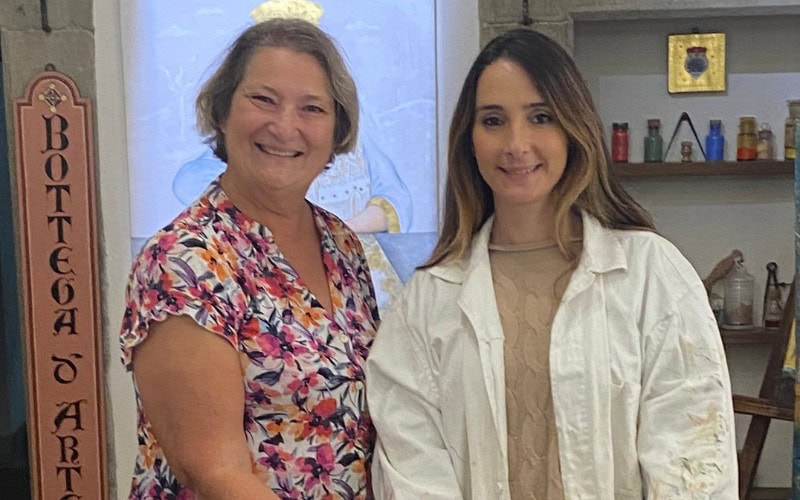
[…] A Visit with Tuscan Artist Silvia Salvadori in Arezzo, Tuscany […]